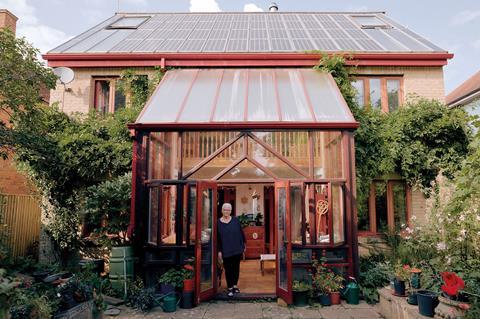- News

All the latest updates on building safety reformRegulations latest
- Focus
- Home
- News
- Focus
- Comment
- Events
- CPD
- Building the Future
- Jobs
- Data
- Subscribe
- Building Boardroom
Soaring energy prices? That’s not a problem in my ecohouse
By Susan Roaf 2022-09-22T06:00:00

Source: Harry Lawlor
Forget everything you thought you knew about building design if you want to achieve net zero. I built a house that heats and cools itself naturally

Source: Harry Lawlor
Susan Roaf, emeritus professor of architectural engineering at Heriot-Watt University, at her home in Oxford
Heatwave Monday, 18 July 2022, Tisha Hagland and I made lunch for 10 architecture students from the University of Idaho. They were in Oxford for their summer school, and I invited them to my ecohouse for lunch so they could avoid the high midday temperatures in the heatwave.
Arriving at 1.30pm, the relief on their faces was clear as they walked from the 36ºC outside into the 21ºC in my dining room. “Thank goodness you have air-conditioning!” said one student. “No,” I replied, “I designed this house to withstand heatwaves and I will tell you how I did it.”
…
This content is available to REGISTERED users
You are not currently logged in.
LOGIN or REGISTER to access this story

LOGIN or REGISTER for free access on selected stories and sign up for email alerts.
Take out a print and online or online only subscription and you will get immediate access to:
- Breaking industry news as it happens
- Expert analysis and comment from industry leaders
- Unlimited access to all stories, including premium content
- Full access to all our online archive
Get access to premium content subscribe today


















